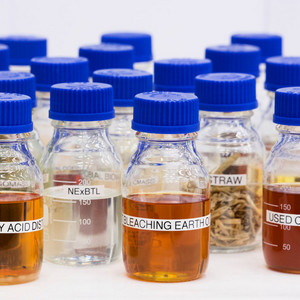Neste Oil claims world leadership in biofuels from waste, residue

Photo: Neste Oil
March 5, 2015
BY Neste Oil
Over the past few years, Neste Oil has become the world’s largest producer of renewable fuels from waste and residues. In 2014, Neste Oil produced nearly 1.3 million tons (more than 420 million gallons) of renewable fuel from waste and residues. In practical terms, this is enough to power for two years all the 650,000 diesel-powered passenger cars in Finland with renewable NEXBTL diesel manufactured from waste and residues.
“We can be really proud that we have succeeded in increasing our use of waste and residue-based feedstocks in the production of renewable NEXBTL fuels to such a significant extent,” says Kaisa Hietala, executive vice president of Neste Oil’s renewable products business area. “Thanks to this, Neste Oil has in just a few years become the world’s largest circular economy enterprise in the biofuels sector. The production of fuels from waste-based feedstock is resource-efficient, and our aim is to have the capability to use 100 percent waste and residues by 2017. We are constantly searching for new waste-based raw materials of increasingly poorer quality, and use the majority of our €40 million R&D expenditure for raw material research.”
Advertisement
Examples of Neste Oil’s waste and residue-based raw materials include animal and fish fats, used cooking oil and various residues generated during vegetable oil refining, such as palm fatty acid distillate (PFAD) and technical corn oil. These raw materials accounted for 62 percent of Neste Oil's renewable inputs in 2014 (52 percent in 2013, 35 percent in 2012).
Additionally, Neste Oil manufactures renewable products from vegetable oils, mainly from crude palm oil. Its proportion of the total feedstock usage has decreased markedly over the past few years and currently stands at 38 percent (47 percent in 2013, 65 percent in 2012). In all, Neste Oil is already able to produce renewable diesel from more than 10 different raw materials, and the total amount of renewal diesel produced by Neste Oil in 2014 would suffice to power 2.8 million passenger cars for one year.
Advertisement
All of the company’s renewable raw materials are sustainably produced and comply with both the requirements set out by legislation and the company’s own stringent sustainability criteria. With regard to crude palm oil, Neste Oil only uses certified feedstock.
Neste Oil produces renewable products based on its proprietary NEXBTL technology in its refineries located in Finland, the Netherlands and Singapore. With its annual capacity of 2 million tons, the company is the world’s largest producer of renewable diesel. The goal is to increase annual capacity to 2.6 million tons without making any major additional investments. Additionally, the NEXBTL product range will expand to cover entirely new applications outside traffic fuels, such as the chemical industry.
Related Stories
The USDA maintained its outlook for 2025-’26 soybean oil use in biofuel production in its latest World Agricultural Supply and Demand Estimates report, released Aug. 12. The forecast for soybean oil prices was also unchanged.
U.S. soybean production for 2025 is forecast at 4.29 billion bushels, down 2% when compared to last year, according to the USDA National Agricultural Statistics Service’s latest monthly Crop Production report, released Aug. 12.
California’s new specified source feedstock attestation requirement: A critical new compliance step for renewable fuel producers
As of July 2025, California’s SCFS requires renewable fuel producers using specified source feedstocks to secure attestation letters reaching back to the point of origin. This marks a significant shift in compliance expectations.
At the University of Missouri, plant biochemist Jay Thelen is using arabidopsis as a powerful model to explore ways to boost oil production — an important step toward creating more sustainable, plant-based energy sources.
Iowa farmers have a new market opportunity for their 2025 soybean crop. Landus is expanding its Clean Fuel Regulation initiative, made possible by recent policy changes expected to increase Canada's demand for liquid biofuel.
Upcoming Events










